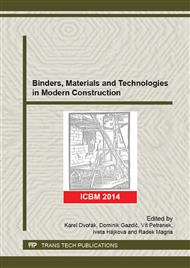p.64
p.68
p.73
p.81
p.87
p.91
p.97
p.101
p.106
The Difference between Traditional and Bone Porcelain Body
Abstract:
Porcelain is a traditional ceramic material, which is manufactured for centuries from a mixture of kaolin, quartz sand and feldspar. Another type of porcelain is produces on the basis on bone ash as fluxing agent. Traditional feldspar porcelain and bone porcelain bodies were compared depending on the firing temperature. Two mixtures of kaolin and potassium feldspar or bone ash were prepared. Bone ash is more intensive fluxing agent which need lower sintering temperature (1100 °C) in comparison with feldspar porcelain (1280 °C). Main difference between compared porcelain bodies is in mineralogical composition. Traditional porcelain based on mullite, quartz and glass phase, bone porcelain contains anorthite and β-tricalcium phosphate (β-TCP) and lower content of glassy phase.
Info:
Periodical:
Pages:
87-90
Citation:
Online since:
April 2015
Authors:
Keywords:
Price:
Сopyright:
© 2015 Trans Tech Publications Ltd. All Rights Reserved
Share:
Citation:


